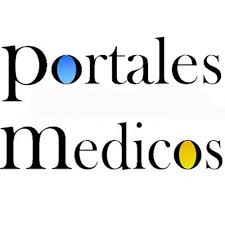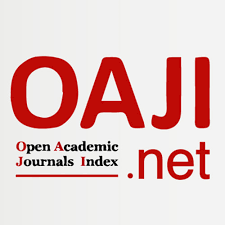Anestesia local y sus consideraciones en trasplante capilar con técnica F.U.E.
Resumen
Introducción. Esta revisión bibliográfica aborda los aspectos clave de la anestesia local y su aplicación en el trasplante capilar. Desarrollo. Los anestésicos locales funcionan interrumpiendo la conducción nerviosa de forma reversible. Se dividen en ésteres y amidas, siendo las amidas las más comunes en la práctica clínica debido a su estabilidad y perfil de seguridad. La acción de los anestésicos locales depende de factores como su solubilidad lipídica, unión a proteínas, pKa, actividad de vasodilatación y su difusión en los tejidos, también se pueden combinar con vasoconstrictores para mejora su perfil de seguridad y disminuyen el sangrado. Es muy importante conocer las propiedades de la lidocaína y bupivacaína, dos anestésicos locales de uso frecuente en trasplante capilar, así como las técnicas más comunes de aplicación de anestesia local del cuero cabelludo que son el bloqueo en anillo o de campo y los bloqueos nerviosos. Discusión. En trasplante capilar la aplicación de la anestesia local es uno de los pasos más importantes a tener en cuenta, con la finalidad de producir el minino dolor o molestia y que tenga una buena experiencia el paciente. Para evitar efectos secundarios y complicaciones es importante evitar la infiltración vascular de anestésicos locales con vasoconstrictores y considerar que en la técnica de Excisión de Unidades Foliculares (FUE) se requiere anestesiar áreas extensas, lo cual puede superar las dosis máximas de los anestésicos. Conclusión. Es importante realizar una buena evaluación del paciente para evitar complicaciones, así como, conocer la técnica de aplicación y los medicamentos que se utilizan para evitar efectos secundarios y complicaciones que se pudieran presentar.
Recibido: 30/12/2024
Aceptado: 25/03/2025
Palabras clave
Texto completo:
PDF (English)Referencias
Jiménez-Acosta F, Ponce-Rodríguez I. Follicular Unit Extraction for Hair Transplantation: An Update. Actas Dermosifiliogr. 2017 Jul-Aug;108(6):532-537. English, Spanish. doi: 10.1016/j.ad.2017.02.015. Epub 2017 May 5. PMID: 28483047.
García-Carmona M, Garcés-Tejeda M. Facial Hair Transplantation with Follicular Unit Excision: Effective Technique in the Micrograft of Beard and Mustache. Hair Transplant Forum Int’l. 2020; Nov-Dec; 30(6):116-119.
Seager DJ, Simmons C. Local anesthesia in hair transplantation. Dermatol Surg. 2002 Apr;28(4):320-8. doi: 10.1046/j.1524-4725.2002.01121.x. PMID: 11966789.
Lam SM. Hair transplant and local anesthetics. Clin Plast Surg. 2013 Oct;40(4):615-25. doi: 10.1016/j.cps.2013.08.006. PMID: 24093656.
Jimenez F, Vogel JE, Avram M. CME article Part II. Hair transplantation: Surgical technique. J Am Acad Dermatol. 2021 Oct;85(4):818-829. doi: 10.1016/j.jaad.2021.04.063. Epub 2021 Apr 27. PMID: 33915242.
Bjerring P, Arendt-Nielsen L. Depth and duration of skin analgesia to needle insertion after topical application of EMLA cream. Br J Anaesth. 1990 Feb;64(2):173-7. doi: 10.1093/bja/64.2.173. PMID: 2317421.
Christoph RA, Buchanan L, Begalla K, Schwartz S. Pain reduction in local anesthetic administration through pH buffering. Ann Emerg Med. 1988 Feb;17(2):117-20. doi: 10.1016/s0196-0644(88)80293-2. PMID: 2827545.
Mader TJ, Playe SJ, Garb JL. Reducing the pain of local anesthetic infiltration: warming and buffering have a synergistic effect. Ann Emerg Med. 1994 Mar;23(3):550-4. doi: 10.1016/s0196-0644(94)70076-1. PMID: 8135432.
Shaefer JR, Lee SJ, Anderson NK. A Vibration Device to Control Injection Discomfort. Compend Contin Educ Dent. 2017 Jun;38(6):e5-e8. PMID: 28586233.
Butterworth JF 4th, Strichartz GR. Molecular mechanisms of local anesthesia: a review. Anesthesiology. 1990 Apr;72(4):711-34. doi: 10.1097/00000542-199004000-00022. PMID: 2157353.
Becker DE, Reed KL. Local anesthetics: review of pharmacological considerations. Anesth Prog. 2012 Summer;59(2):90-101; quiz 102-3. doi: 10.2344/0003-3006-59.2.90. PMID: 22822998; PMCID: PMC3403589.
Jankovic D. (2003). Técnicas de Analgesia y Anestesia Regional. 2a ED. México D.F. Editorial Prado.
Hurford W.E. (2005). Anestesia Massachusetts General Hospital. 6th ED. Madrid, España. Editorial Marbán.
Arribas-Blanco JM, Rodríguez Pata N, Esteve Arrola B, Beltrán Martín M. Local and loco-regional anesthesia in minor surgery. SEMERGEN: 2001 Oct;27(9): 471-481.
Arthur, G.R. Pharmacokinetics. In, local Anesthetics (Strichartz, G.R., ed.) Handbook of Experimental Pharmacology. Vol. 81. Springer-Verlag, Berlin, 1987, pp. 165-186.
Hardman J.G., Limbird L.E. (2003). Goodman & Gilman. Las Bases Farmacológicas de la Terapéutica. 10ma ED. México D.F. Editorial McGraw-Hill.
Scott DB, Jebson PJ, Braid DP, Ortengren B, Frisch P. Factors affecting plasma levels of lignocaine and prilocaine. Br J Anaesth. 1972 Oct;44(10):1040-9. doi: 10.1093/bja/44.10.1040. PMID: 4639822.
Hersh EV, Giannakopoulos H, Levin LM, Secreto S, Moore PA, Peterson C, Hutcheson M, Bouhajib M, Mosenkis A, Townsend RR. The pharmacokinetics and cardiovascular effects of high-dose articaine with 1:100,000 and 1:200,000 epinephrine. J Am Dent Assoc. 2006 Nov;137(11):1562-71. doi: 10.14219/jada.archive.2006.0092. PMID: 17082283.
Neal JM, Bernards CM, Butterworth JF 4th, Di Gregorio G, Drasner K, Hejtmanek MR, Mulroy MF, Rosenquist RW, Weinberg GL. ASRA practice advisory on local anesthetic systemic toxicity. Reg Anesth Pain Med. 2010 Mar-Apr;35(2):152-61. doi: 10.1097/AAP.0b013e3181d22fcd. PMID: 20216033.
Quintana-Puerta JE, Cifuentes-hoyos V. Systemic toxicity by local anesthetics. CES Medicina. 2014 Enero-Junio; 28 (1):107-117.
Covino BG. Toxicity of local anesthetic agents. Acta Anaesthesiol Belg. 1988;39(3 Suppl 2):159-64. PMID: 3176846.
Di Gregorio G, Neal JM, Rosenquist RW, Weinberg GL. Clinical presentation of local anesthetic systemic toxicity: a review of published cases, 1979 to 2009. Reg Anesth Pain Med. 2010 Mar-Apr;35(2):181-7. doi: 10.1097/aap.0b013e3181d2310b. PMID: 20301824.
Drasner K. Local Anesthetic Toxicity. ASA Refresher Courses in Anesthesiology. 2011;39(1):33-40.
Zipf, H.F., and Dittmann, E.C. General pharmacological effects of local anesthetics. In Local Anesthetics, Vol. 1. International Encyclopedia of Pharmacology and Therapeutics, Sect. 8. (Lechat, P., ed.) Pergamon Press, Ltd., Oxford, 1971, pp 191-238.
Covino, B.G. Toxicity and systemic effects of local anesthetic agents. In, local Anesthetics (Strichartz, G.R., ed.) Handbook of Experimental Pharmacology. Vol. 81. Springer-Verlag, Berlin, 1987, pp. 187-212.
Montamat SC, Cusack BJ, Vestal RE. Management of drug therapy in the elderly. N Engl J Med. 1989 Aug 3;321(5):303-9. doi: 10.1056/NEJM198908033210507. PMID: 2664519.
Su N, Wang H, Zhang S, Liao S, Yang S, Huang Y. Efficacy and safety of bupivacaine versus lidocaine in dental treatments: a meta-analysis of randomised controlled trials. Int Dent J. 2014 Feb;64(1):34-45. doi: 10.1111/idj.12060. Epub 2013 Oct 11. PMID: 24117122; PMCID: PMC9375019.
Velioglu O, Calis AS, Koca H, Velioglu E. Bupivacaine vs. lidocaine: a comparison of local anesthetic efficacy in impacted third molar surgery. Clin Oral Investig. 2020 Oct;24(10):3539-3546. doi: 10.1007/s00784-020-03224-5. Epub 2020 Feb 17. PMID: 32065309.
Balakrishnan K, Ebenezer V, Dakir A, Kumar S, Prakash D. Bupivacaine versus lignocaine as the choice of locall anesthetic agent for impacted third molar surgery a review. J Pharm Bioallied Sci. 2015 Apr;7(Suppl 1):S230-3. doi: 10.4103/0975-7406.155921. PMID: 26015720; PMCID: PMC4439680.
Nithyanandam, R., & Fleisher, L. A. (2018). Local Anesthetics. En: Miller’s Anesthesia (9th ed.) (pp. 654-676). Elsevier.
Buenrostro-Vásquez, C. Buck-Soltero J,A. Morales-Valle L, A. Granados-Tinajero S, O. Anestesia en liposucción de grandes volúmenes. Anestesia en México. 2017 29;(1).
Clarkson CW, Hondeghem LM. Mechanism for bupivacaine depression of cardiac conduction: fast block of sodium channels during the action potential with slow recovery from block during diastole. Anesthesiology. 1985 Apr;62(4):396-405. PMID: 2580463.
Unger R., Shapiro R. (2022). Hair Transplantation. 6th ed. New York, USA. Thieme Medical Publishers.
Curasco N, Quintana J, Tintaya M, Velásquez J, Ccahuantico-Choquevilca LA, Pillco KH. Revisión anatómica del cuero cabelludo. Rev Peruana de Morfología. 2020;1(2): 13-20. doi: https//doi.org/10.51343/revperuanamorfologia.v1i2.287.
Llorens D, et al. Total and partial reconstruction of eyebrows with follicular unit transplantation: 10 years of experience. Ibero-Latin American Plastic Surg. 2013;39(1):15-22.
Barusco M. Anesthesia Techniques for Harvesting Via Follicular Unit Excision (FUE). Facial Plast Surg. 2023 Oct 25. doi: 10.1055/a-2198-2479. Epub ahead of print. PMID: 37879350.
Rouvière H, Delmas A, Delmas V. Anatomía humana: descriptiva, topográfica y funcional. Tomo 1. Undécima Edición. Barcelona: Masson; 2005.
Kemp WJ, Tubbs RS, Cohen-Gadol AA. The innervation of the scalp: A comprehensive review including anatomy, pathology, and neurosurgical correlates. Surg Neurol Int [Internet]. el 13 de diciembre de 2011 [citado el 6 de junio de 2020];2.
Howe NR, Williams JM. Pain of injection and duration of anesthesia for intradermal infiltration of lidocaine, bupivacaine, and etidocaine. J Dermatol Surg Oncol. 1994 Jul;20(7):459-64. doi: 10.1111/j.1524-4725.1994.tb03216.x. PMID: 8034840.
Junqueira, L. C.; Carneiro, Journal of Basic Histology, 10th ed.; Lange Medical Books: New York, 2003.
Guay J. The epidural test dose: a review. Anesth Analg. 2006 Mar;102(3):921-9. doi: 10.1213/01.ane.0000196687.88590.6b. PMID: 16492853.
Bernstein RM, Rassman WR. Limiting epinephrine in large hair transplant sessions. Hair Transpl Forum Int 2000;10:39-42.
Rosenberg PH, Veering BT, Urmey WF. Maximum recommended doses of local anesthetics: a multifactorial concept. Reg Anesth Pain Med. 2004 Nov-Dec;29(6):564-75; discussion 524. doi: 10.1016/j.rapm.2004.08.003. PMID: 15635516.
Klein JA, Jeske DR. Estimated Maximal Safe Dosages of Tumescent Lidocaine. Anesth Analg. 2016 May;122(5):1350-9. doi: 10.1213/ANE.0000000000001119. PMID: 26895001; PMCID: PMC4830750.
DOI: https://www.doi.org/10.53766/AcBio/Se encuentra actualmente indizada en: | |||
 |  |  | |
  |  |  |  |
 |  |  |  |
 |  |  | |
![]()
Todos los documentos publicados en esta revista se distribuyen bajo una
Licencia Creative Commons Atribución -No Comercial- Compartir Igual 4.0 Internacional.
Por lo que el envío, procesamiento y publicación de artículos en la revista es totalmente gratuito.



